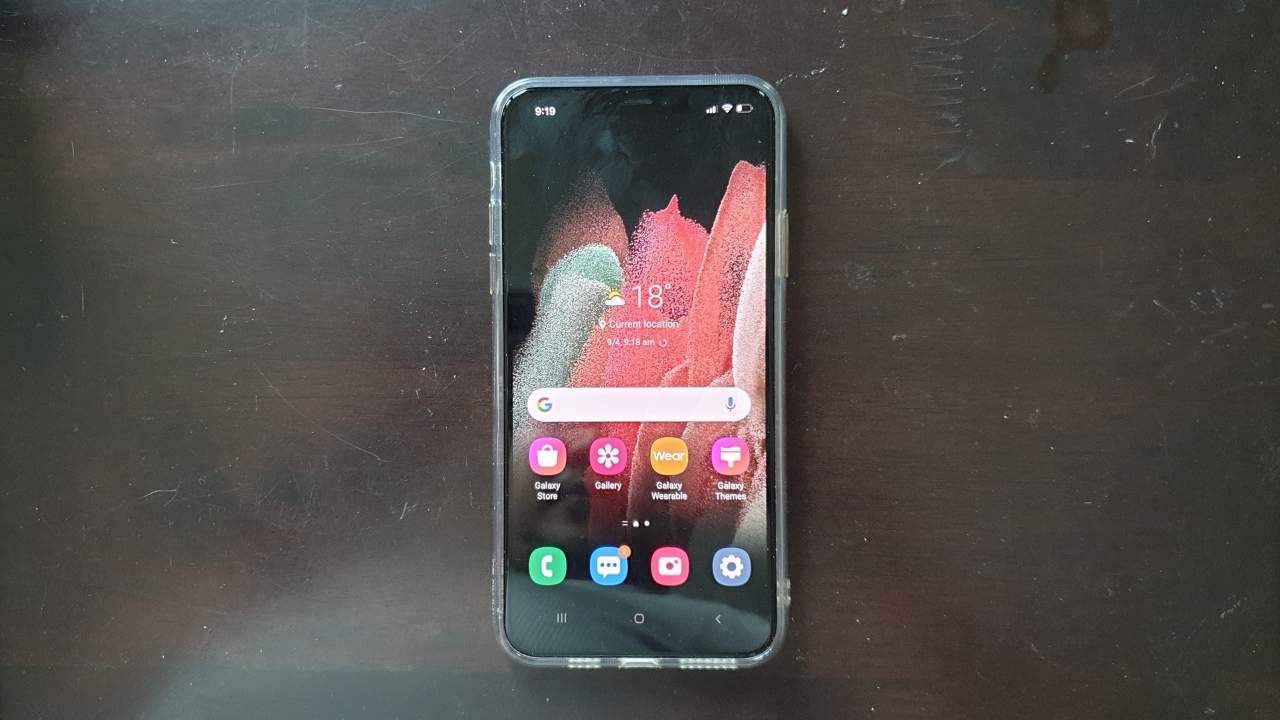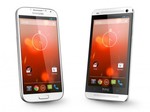Tribit StormBox Micro Review – Tiny + Versatile With Punchy Sound - Android
Tribit is a name that just about anybody should recognize when it comes to audio accessories. So, when the company offered to send out its Tribit StormBox Micro for review, that was an opportunity not to be missed. Especially since this is effectively the smallest speaker the company has made yet. The diminutive size of [...]
Read More...
The post Tribit StormBox Micro Review – Tiny & Versatile With Punchy Sound appeared first on Android Headlines.

Tribit is a name that just about anybody should recognize when it comes to audio accessories. So, when the company offered to send out its Tribit StormBox Micro for review, that was an opportunity not to be missed. Especially since this is effectively the smallest speaker the company has made yet.
The diminutive size of Tribit StormBox Micro doesn’t necessarily mean that the speaker is weak though. As with the company’s other offerings, this speaker is loud and delivers plenty of punch and balance. Better still, it’s also pairable with others of its kind and, at just under $50, that’s not a stretch for the wallet either. At least on paper.
But how does this speaker do under more strenuous testing? Let’s dig in and find out.
Tribit StormBox Micro is anything but diminutive on quality
 Tribit StormBox Micro is small, waterproof, and premium
Tribit StormBox Micro is small, waterproof, and premium When I opened up my review unit for the Tribit StormBox Micro, I was taken aback by just how small this little speaker actually is. It fit neatly in my hand, just for starters, but it also wasn’t so thick as to be too difficult to stuff into some of my larger jeans’ pockets. All without diminishing sound too much, as we’ll discuss later on.
With that said, there’s far more to the hardware here than just size. Tribit engineered this speaker from premium rubberized materials on all sides except the front. That’s coated in a premium-touch woven fabric that wraps cleanly around each edge. And, of course, at least for my review unit, orange. The company also sells the speaker in black.
The front of the speaker features a bit of metal embossed branding and three buttons. A multi-function button that provides easy access to source-device AI, coupled with multi-function plus and minus buttons for playback control. Each button is clicky, rather than squishy, as are the two buttons on the leading edge. Those are used for powering on and pairing the speaker.

On that same edge, Tribit includes no fewer than six LEDs. There are five representing the battery life, 20-percent each, and another for connectivity and error status checking. All are easy to read, although I never encountered any errors during my review of Tribit StormBox Micro.
Along another edge of the gadget, Tribit includes an open USB-C charging port. That’s also snappy when used but also doesn’t degrade this speaker’s IP67 water- and dust-resistance rating.
The only other cutouts are for a passive bottom-firing speaker grille, stubby little silicone or rubber legs for stability, and a latch for the included silicone strap. The latter of which, like all of the ports and buttons, is snappy and fits snugly in place. So it won’t be slipping loose by accident. Like all of this speaker’s build, it feels like premium material. And I could easily see this speaker, on that front alone, costing much more than it does.
Battery life is better than just acceptable but charging does take some time
 Hours of battery life and quick charging is a hallmark for this Tribit speaker
Hours of battery life and quick charging is a hallmark for this Tribit speaker Battery life is incredibly important for Bluetooth speakers but is also subjective. Variances such as volume, distance from the source device, and other environmental factors attribute to drain. And that drain can vary quite a bit.
With that said, for my test for this review of Tribit StormBox Micro, I maintained a distance of around 25-feet from the source device. This speaker is Bluetooth 5.0. So, in addition to supporting near-lossless audio, that’s approaching the effective maximum range — barring wide open spaces, where range increases significantly up to 100ft. I also maintained volume at or above 75-percent during the battery test.
All of that is to say that while battery life is subjective, my experience should be at the more extreme end. With the exception of multi-speaker pairing, which will undoubtedly drain the battery faster. And leaning towards the least time that should be possible to attain with this speaker. I saw just short of 8-hours of battery life under those circumstances. And that’s impressive for a speaker this small and powerful.
Charging, conversely, should be much more stable across all users. And I saw a time of around 2-hours and 40-minutes to charge completely once completely drained. That’s not nearly as impressive as the longevity, of course. But that does mean that an hour of charging should get you through the day if you need that from this speaker.
Audio quality was better than expected but not perfect
 Don’t be fooled by the size. Tribit StormBox Micro hits hard
Don’t be fooled by the size. Tribit StormBox Micro hits hard At first glance, this little speaker, measuring just under 4-inches square by under 2-inches thick seems small. In fact, as noted earlier, that’s something that struck me immediately when I opened the Tribox StormBox Micro for review. And “micro” is right there in the name after all. But that doesn’t mean the audio has to be tiny, at least not for this speaker.
Surprisingly, Tribit didn’t aim to hit every audible frequency here though. Instead, it left out the lowest registers from 20Hz to 60Hz. And aimed for 70Hz to 20kHz. So there are definitely some missing notes in the bass frequencies. And the bass itself, while still very present, doesn’t punch as hard as speakers that are twice its size. But “tinny” would not be an accurate description for this speaker either.
Balance is, instead, on point for the size and likely far better with two speakers paired in stereo. With highs and mids only slightly more pronounced than would be expected from a speaker built by Tribit. Put simply, for under $50 and its size, the sound is great but not as good as some of the company’s other offerings.
Volume is, conversely, stellar. In a somewhat quiet house, with the speaker in the basement on the other side of the home, I was still able to hear the speaker in the upstairs living room with the volume at just 80-percent. With plenty of detail and even bass still clearly audible.
The caveat to that, of course, is that the lower volumes, below 30-percent or so, details begin to get lost. That’s not unexpected for a speaker this size or price. But was still slightly disappointing since it’s not an issue I noted with other Tribit speakers. Similarly, at higher volumes, bass can get a bit crunchy, especially at the lowest registers. So it may be best not to exceed 80-85-percent with some tunes. Otherwise, the speaker sounds as though it might blow.
Connectivity and features are great for the money
 Tribit StormBox Micro’s rubber band allows you to strap it to just about anything
Tribit StormBox Micro’s rubber band allows you to strap it to just about anything Now, as noted above, Tribit StormBox Micro comes with Bluetooth 5.0 but, as discovered during this review, that’s hardly the only connectivity feature. Not least of all, this speaker can be paired in stereo or in Party Mode with another Tribit StormBox Micro and multiple sources. So it is possible to get a little bit more volume and maintain audio quality a bit better if that’s needed. You’ll just have to buy more than one.
Connections from this speaker, otherwise, are solid and the quality is near-lossless. As discussed in the audio quality segment of this review, that doesn’t mean Tribit StormBox Micro offers perfect audio in any sense. But using this speaker at longer-than-average distances without losing quality is definitely a benefit.
Stepping past connections, there are other great features in place here as well. For instance, there is a rubber strap at the back which slots snugly into place against a latch hole. That allows this speaker to be strapped to objects from bike handlebars to your hand, a tree branch, or just about any other similarly slim object. And, like the charging port, that’s going to seat firmly, with almost no jostle at all. So it isn’t going to slip loose under most circumstances.
Tribit StormBox Micro is worth every penny and then some
 Tribit StormBox Micro is portable, great audio
Tribit StormBox Micro is portable, great audio As shown in this review, there are at least a few minor quirks to Tribit StormBox Micro. It won’t cover the lowest frequencies audible to the human ear, for example. And things get a bit distorted when the volume is maxed out. Especially in the lower registers. What’s more, the bass tones that are present aren’t exactly pounding. But that’s not surprising with consideration for this speaker’s tiny footprint.
The only other caveat is that this speaker takes nearly 3-hours to charge up. Not unexpected, of course, but somewhat disappointing with the advances in charging that have been made over the past few years.
Bearing all of that in mind, Tribit StormBox Micro is a dual-pairable — for stereo audio –, Party Mode-ready speaker that measures under 4-inches by under 4-inches. So, even if it didn’t include a stretchable, firmly-latched strap, it’s incredibly portable. And, despite its small size, it’s incredibly loud, well-balanced, and clearly showcases just about every frequency from 70Hz to 20kHz. Especially at the middle volumes.
What it lacks in size and punch, it makes up for on that front and with regard to usability. All of the components are well-built and sturdy, with an IP67 rating. So there won’t be many concerns about leaving in the rain for a bit or if it falls in the pool for a few seconds. At least not if it doesn’t go too deep. All without losing a premium in-hand feel and stylish design.
At under $50, Tribit StormBox is easily one of the best speakers in its class, if a bit lacking in some regards. In fact, it’s affordable and good enough, even, that I would recommend spending the extra and getting two for stereo pairing.
The post Tribit StormBox Micro Review – Tiny & Versatile With Punchy Sound appeared first on Android Headlines.
09/04/2021 06:34 PM
Trade Your Old T-Mobile Device for a 'Free' 5G Phone
09/04/2021 04:45 PM
Fire risk makes Verizon recall 2.5 million Ellipsis Jetpack mobile hotspots
09/04/2021 06:11 AM
Samsung iTest lets an iPhone turn into an Android phone
09/04/2021 05:39 PM
Can a gaming mouse filled with holes really be water resistant
09/04/2021 03:00 PM
Will your LG phone get an Android 11 or 12 update
09/04/2021 09:50 AM
Twitch viewership more than doubled over the last year
09/04/2021 05:00 PM
- Comics
- HEALTH
- Libraries & Demo
- Sports Games
- Racing
- Cards & Casino
- Media & Video
- Photography
- Transportation
- Arcade & Action
- Brain & Puzzle
- Social
- Communication
- Casual
- Personalization
- Tools
- Medical
- Weather
- Shopping
- Health & Fitness
- Productivity
- Books & Reference
- Finance
- Entertainment
- Business
- Sports
- Music & Audio
- News & Magazines
- Education
- Lifestyle
- Travel & Local







